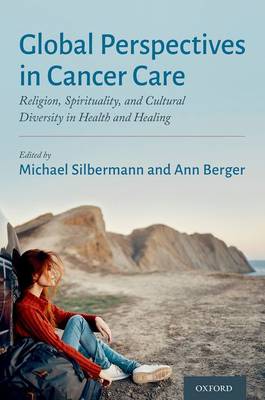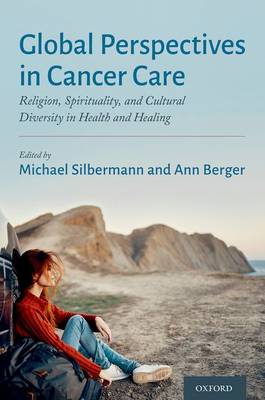
- Afhalen na 1 uur in een winkel met voorraad
- Gratis thuislevering in België vanaf € 30
- Ruim aanbod met 7 miljoen producten
- Afhalen na 1 uur in een winkel met voorraad
- Gratis thuislevering in België vanaf € 30
- Ruim aanbod met 7 miljoen producten
Zoeken
Global Perspectives in Cancer Care
Religion, Spirituality, and Cultural Diversity in Health and Healing
Michael Silbermann, Ann Berger
Paperback | Engels
€ 148,45
+ 296 punten
Omschrijving
With cancer ranking as the primary or secondary cause of premature death in almost 100 countries worldwide, the World Health Organization recognized a high level of investment in cancer control and treatment (including palliative care) in 2019. At that time, governments at the World Health Assembly (WHA) unanimously adopted a new cancer resolution (Universal Health Coverage: Moving Together to Build a Healthier World). The resolution noted the potential for cancer prevention to reduce cancer burden in the future, while reducing the suffering from cancer in the communities. As most countries are facing an overall increase in the absolute number of cancer cases, large geographical diversity in cancer occurrence and variations in the magnitude and profile of the disease still continue between and within world regions. Specific types of cancer dominate globally: lung, female breast, and colorectal cancer. The regional variations in common cancer types signal the extent to which societal, economic, and lifestyle changes interplay to differentially impact the profile of this most complex group of diseases. Although survival rates for cancer have improved significantly over the past few decades, for each individual, the diagnosis and treatment of cancer are still devastating, affecting the family and community as well. The care of a person with cancer must be more than just the treatment of the cancer itself. Understanding the cultural, psychological, social, and spiritual dimensions of the cancer sufferer and their family and community will ensure the best care. In order to treat individuals with cancer and understand how to give the best possible care to underserved populations, we need to understand cultural diversity. Understanding that cultural aspects of a society may be intertwined with finances and other resources can improve adherence and access to care. Culture is made up of language, religion, cuisine, social norms, history, ancestry, music, arts, and spirituality. In order to improve cancer care outcomes, patients' diverse spiritual and cultural beliefs must be recognized. In addition, available methods must be utilized to improve access and adherence to treatment modalities and regimens. In this book, we focus on numerous diverse cultures, traditions, and faiths. Many parts of the world are composed of indigenous cultures, with unique spiritual beliefs in addition to the region's primary religion. We present chapters on indigenous religions as well as indigenous traditional healers. People everywhere experience trouble, sorrow, need, and sickness, and they develop skills and knowledge in response to these adversities. This book provides insightful models of these parameters and serves as a valuable resource for health care providers and policymakers by taking a global approach to cultural diversity in the world. By understanding this multiculturalism and the many aspects of psychological, social, and spiritual dimensions of health and healing, we can learn from one another.
Specificaties
Betrokkenen
- Auteur(s):
- Uitgeverij:
Inhoud
- Aantal bladzijden:
- 528
- Taal:
- Engels
Eigenschappen
- Productcode (EAN):
- 9780197551349
- Verschijningsdatum:
- 1/04/2022
- Uitvoering:
- Paperback
- Formaat:
- Trade paperback (VS)
- Afmetingen:
- 155 mm x 236 mm
- Gewicht:
- 752 g

Alleen bij Standaard Boekhandel
+ 296 punten op je klantenkaart van Standaard Boekhandel
Beoordelingen
We publiceren alleen reviews die voldoen aan de voorwaarden voor reviews. Bekijk onze voorwaarden voor reviews.











